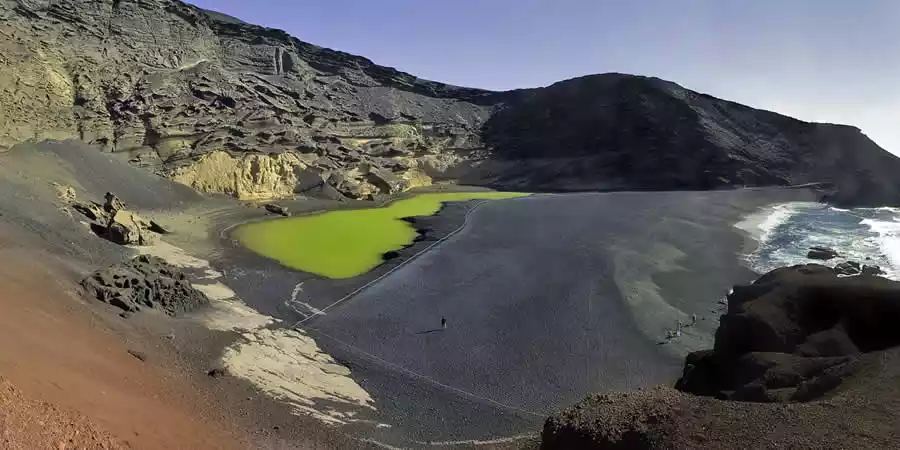
Lanzarote is a true testament to nature’s power, with its landscapes carved by volcanic forces creating an unforgettable environment. The island is often regarded as the most volcanic of the Canary Islands, and its "lunar" landscape, covered with craters, ravines, and solidified lava valleys, stands out as one of its main attractions. These striking features give the island a unique allure, drawing visitors to experience its otherworldly beauty.
The volcanoes and the people who have lived alongside them are the architects of this remarkable natural art. Lanzarote invites visitors to witness its landscapes with awe and admiration, offering a beauty unlike any other place on Earth.
For those wishing to explore the island's deep connection with its volcanic surroundings, the Centers of Art, Culture, and Tourism offer an insightful experience. These creatively designed spaces not only protect the island's heritage but also contribute to understanding the relationship between its people and their environment. Each center is distinct, together forming an essential panorama of Lanzarote’s culture.
The conservation of Lanzarote's natural heritage is intertwined with its history, creating a space that feels destined for dreams. The people of Lanzarote have adapted their lifestyle to the volcanic landscape, skillfully utilizing the fertile ash fields for agriculture. Vineyards flourish within large volcanic craters, further enhancing the island’s distinctive lunar scenery. This, combined with the volcanoes and the sea, highlights the island’s strong commitment to sustainable environmental practices and development.
Lanzarote may not be known for its greenery, and its rugged landscapes might seem inhospitable at first glance, but this only adds to the island's charm. Far from being a hindrance, the stark beauty of Lanzarote's landscapes, shaped by volcanic forces, creates a powerful and compelling attraction that sets the island apart from others.
Known for their beauty, they are the last ones left in exploitation in Lanzarote and give a special appeal to this unique landscape.
Timanfaya represents the best sample of volcanic habitat hardly colonized by vegetation.
Fragment of cliff coast located between the Salinas de Janubio and El Golfo that shows, as in so many places in Lanzarote, the always surprising spectacle of nature .
Art, Culture Centers and Tourism of the Cabildo de Lanzarote masterfully combine art and nature.
Gran tubular cavern, just over 6 km long on land, continuing under the seabed for at least 1.5 km more
They are beaches with calm waters, which are accessed ede by dirt tracks where the practice of nudism is well seen.
La Geria is a unique landscape , full of character and remarkable beauty where man and nature coexist harmoniously. They have a particular vineyard cultivation system
The Riscos de Famara, with their impressive vertical walls, are the main mountain massif of Lanzarote, in the north of the island.
It covers a large part of the northeastern end of the island and is product of the eruptive activity of the volcano of the same name, giving rise to a very attractive landscape